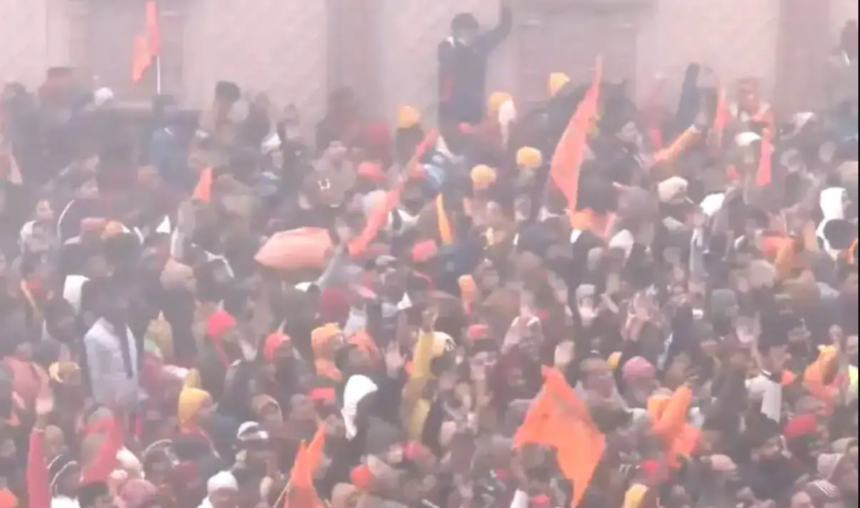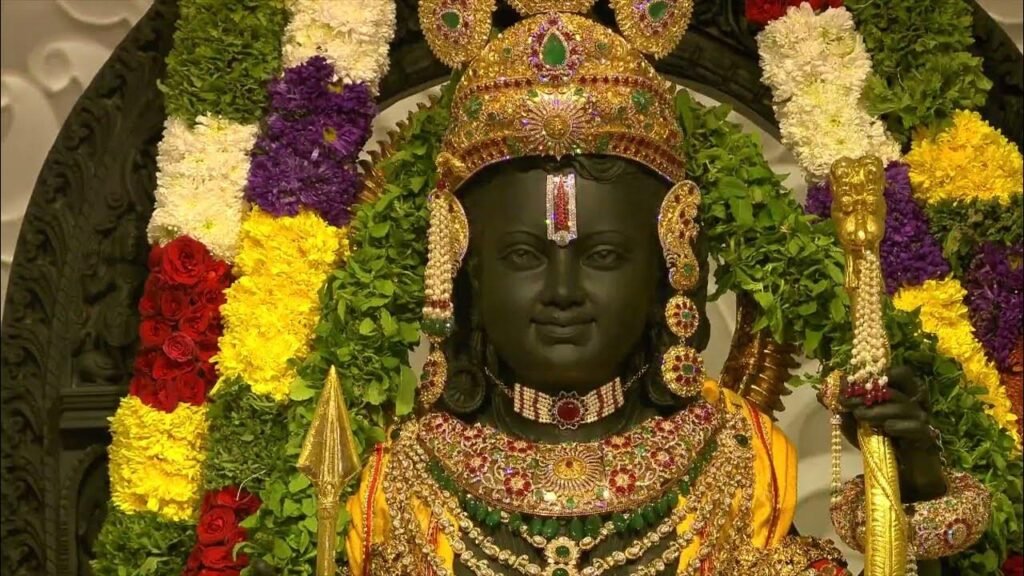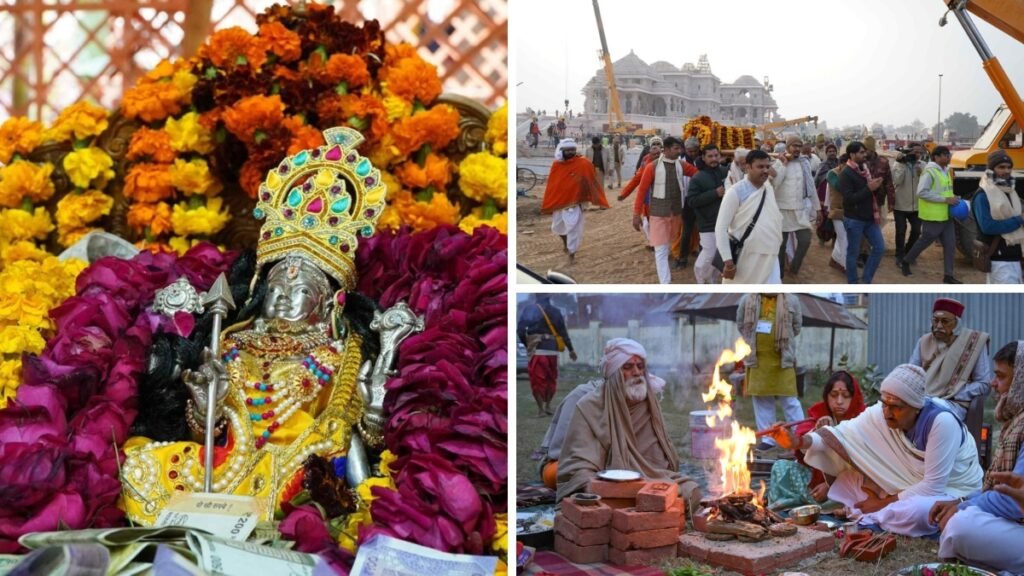Historic Moment:
In a historic moment that echoed across the spiritual landscape of India, the much-anticipated consecration ceremony of the Ram Temple in Ayodhya took place Day After ‘Pran Pratishtha’, culminating in the opening of the temple to the public. This momentous occasion, presided over by Prime Minister Narendra Modi, drew political figures, religious leaders, and enthusiasts from various walks of life.
Prime Minister’s Presence:
The ‘pran pratishtha’ rituals, integral to the consecration process, were performed with utmost devotion the day before the temple’s grand opening. Prime Minister Modi, a central figure in the Ram Janmabhoomi movement, prostrated himself before the sacred idol of Ram Lalla, symbolizing the divine essence of Lord Rama.
Early Devotees:
As the first rays of dawn bathed Ayodhya in a golden glow, massive crowds gathered outside the temple, eagerly awaiting the moment they could step into the newly consecrated sanctum. Devotees, displaying unwavering faith, began congregating as early as 3 am, forming a sea of humanity that mirrored the deep-rooted reverence for Lord Rama.
Public Access:
The gates of the Ram Temple opened to the public from 7 am to 11:30 am and later from 2 pm to 7 pm, allowing visitors to witness and partake in the divine aura of this sacred space. The atmosphere in Ayodhya was charged with spiritual fervor, resonating with the collective heartbeat of a nation that had long yearned for this sacred structure to grace its skyline.
The consecration ceremony, or ‘pran pratishtha,’ held immense significance, not only for its religious connotations but also as a symbol of unity and resilience. Prime Minister Modi, sharing his sentiments on Twitter, expressed the emotional impact of witnessing the consecration of Shri Ram Lalla’s life in Ayodhya Dham. He remarked, “It is my great pleasure to be a part of this divine program. Jai Siya Ram!”
Dignitaries Present:
Addressing a gathering of around 8,000 individuals, including seers. Ram Janmabhoomi movement associates. And eminent personalities from diverse fields. PM Modi emphasized the historical importance of the occasion. The ceremony, broadcast to the nation. bore witness to the presence of dignitaries such as Uttar Pradesh Governor Anandiben Patel. Chief Minister Yogi Adityanath, and RSS chief Mohan Bhagwat.
Political Discourse:
The run-up to the consecration ceremony had been marked by political debates, with the ruling BJP and the opposition engaging in a discourse that, at times, bordered on acrimony. The event itself was labeled an “RSS-BJP event” by the opposition, creating a backdrop of ideological divergence.
Cultural Enrichment:
Several states governed by the BJP declared the day a holiday. Allowing people to witness the ceremony on television and participate in local temple events. The build-up to the consecration was further heightened by a devotional “Mangal Dhwani,” featuring 50 traditional musical instruments from various regions of India. Adding a cultural and melodic richness to the proceedings.
Sculptural Marvel:
Crafted by sculptor Arun Yogiraj from Mysuru. The 51-inch-tall idol of Lord Rama. Standing gracefully on a lotus, was carved meticulously from a single block of stone. The consecration ceremony, performed by PM Modi, included the ‘aarti’ of the Ram Lalla idol within the sanctum sanctorum.
Symbol of Unity:
In a powerful and emotional speech. Prime Minister Modi declared the Ram Temple as a symbol of peace. Patience. Harmony. And amity within Indian society. Invoking the spirit of ‘Vasudhaiva Kutumbkam,’ he emphasized that Lord Rama defines the world as a family.
Architectural Splendor:
Congratulating the nation on the occasion, PM Modi remarked. “After unprecedented patience. Innumerable sacrifices and penance. Our Lord Ram has arrived. I congratulate the country on this occasion.” The Prime Minister called for unity and stressed that the temple is not merely a symbol of triumph but also humility. Showcasing India’s maturity in resolving historical disputes.
He urged critics to reconsider their views, stating, “Ram symbolizes energy, not fire, and is a solution, not a dispute.” The construction of the Ram Temple, according to PM Modi, is symbolic of Indian society’s peace, patience, and mutual harmony.
The grand event saw the presence of approximately 7,000 VVIPs. Including actors, sportspersons. Industrialists. And politicians. Contributing to the inclusive and diverse nature of the gathering. The vertical structure of the Ram Mandir. Crafted in the traditional Nagara architectural style. Spans 380 feet in the east-west direction. With a width of 250 feet and an impressive height of 161 feet.
Consisting of floors. Each measuring 20 feet in height, the temple is supported by a remarkable ensemble of 392 pillars and adorned with 44 gates. This architectural marvel stands as a testament to the cultural richness and artistic finesse that defines the essence of Ayodhya’s sacred landscape.
Prime Minister Modi’s involvement in the consecration ceremony extended beyond the ritualistic aspects. He followed a strict 11-day ‘anushthan,’ sleeping on the floor and partaking in rituals with unwavering devotion. His visit to various temples across India ahead of the ‘pran-pratishtha’ ceremony highlighted the spiritual significance of the event.
Symbol of Unity:
In the aftermath of the consecration. PM Modi encouraged the people to “lay the foundation of India for the next 1,000 years” and pledged to build a “capable. Grand, divine India.” He envisioned the construction of the Ram Temple as an impetus for positive transformation and called for viewing it as a symbol of energy and solution rather than a source of dispute.
Also read : “Celebs At Ayodhya: Bollywood’s Glittering Presence at the Ram Temple Consecration”
Cultural Tapestry:
The opening Day After ‘Pran Pratishtha’ the Ram Temple to the public marks the culmination of a prolonged legal battle that concluded with the Supreme Court’s ruling in favor of the temple in November 2019. As Ayodhya embraces this new chapter in its storied history. The Ram Temple stands not only as a testament to religious fervor but also as a symbol of unity. Cultural heritage, and the resilience of a nation. The doors of the temple are now open. Inviting devotees and visitors to experience the divine aura of this architectural marvel that has become an integral part of India’s cultural tapestry.







